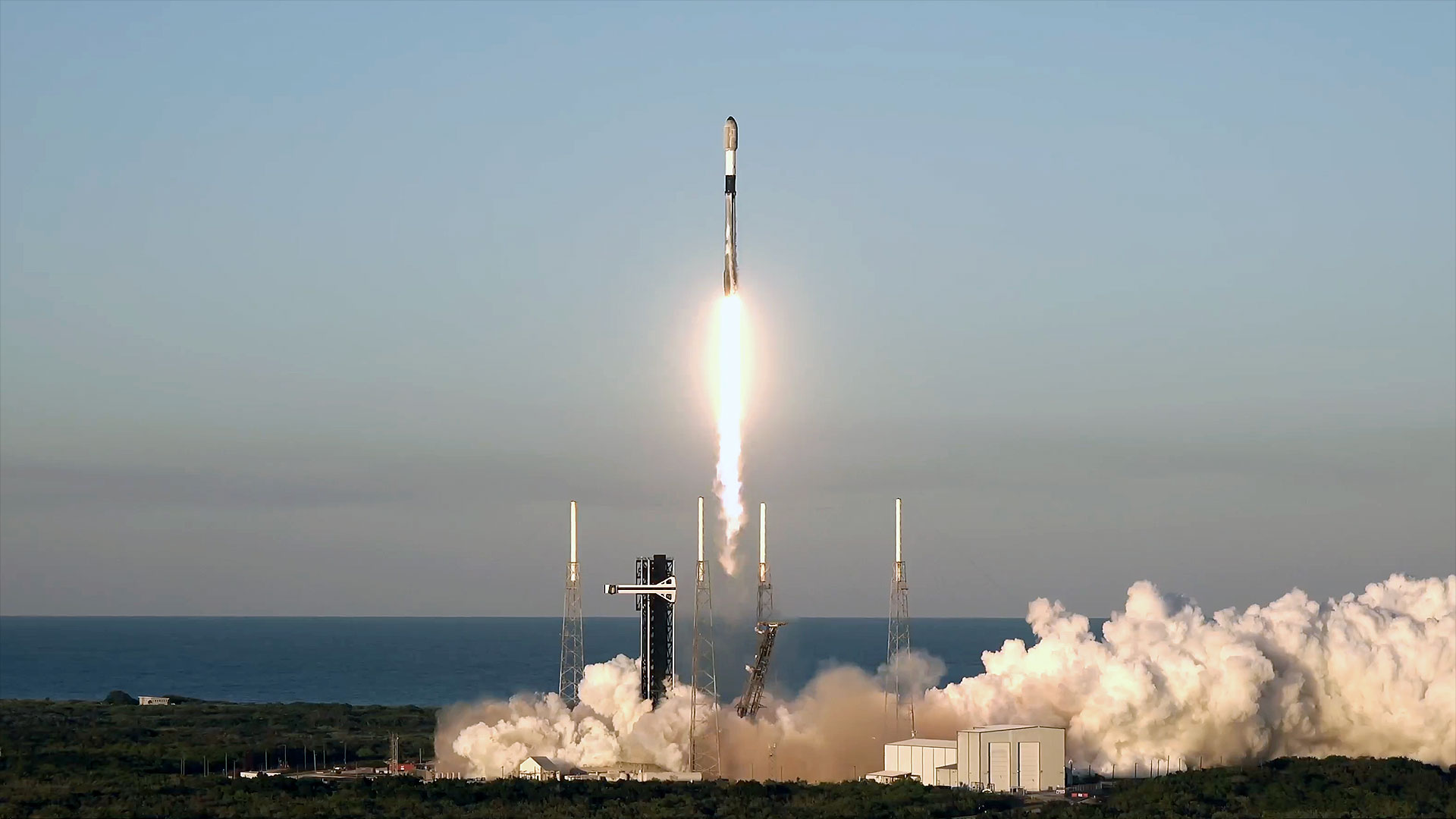China Lofts Second Satellite in Double Star Duo
China successfully lofted the second spacecraft in its Double Star mission Sunday, a joint program with European scientists to probe the Earth's magnetic field.
The spacecraft, Tan Ce 2 (Explorer 2), rode a Long March 2C rocket into orbit from its Taiyuan spaceport staging ground at 3:05 a.m. EDT (0705 GMT) July 25, a full day earlier than its scheduled liftoff time to avoid heavy rains expected Monday.
The spacecraft joined its predecessor Tan Ce 1 and the European Space Agency's (ESA) four-satellite Cluster mission already in orbit. Together, the six satellites make up the most comprehensive flotilla to study the Earth's magnetic field.
"I'm delighted not only that the launch was successful, but that the spacecraft's [science] boom deployed," said England's Michael Hapgood, lead scientist for Double Star's European Payload Operations Service, in a telephone interview. "It's always a dodgy thing deploying anything mechanical in space, and it worked."
Researchers hope the twin satellites of Double Star will give scientists a new look at the effects of magnetic storms high above the planet's surface. Caused by the collision of energetic solar wind particles with the magnetic fields, such storms can cause power failures and communication interruptions in addition to the auroras seen in the night sky,
Tan Ce 2's successful space shot marked the last launch in what has become China's first joint mission with European space scientists. The first Double Star launch delivered Tan Ce 1 into orbit on Dec. 30, 2003.
Both Double Star satellites are spinning cylinders measuring 2 meters long and 1 meter wide. They both have elliptical orbits, with Tan Ce 2 polar orbit ranging between 423 miles (681 kilometers) and 23,784 miles (38,278 kilometers). European researchers have contributed half of the 16 science instruments aboard the two satellites, tools that mirror those aboard the four identical Cluster spacecraft.
Breaking space news, the latest updates on rocket launches, skywatching events and more!
"It just shows that you can do more together than you do on your own," Hapgood said of the international cooperation. "It's always been very difficult to study the magnetic field with a single spacecraft, where you only get data at one point in time."
Double Star's Tan Ce 2 is expected to operate for at least a year, building on the 18-month design lifetime of Tan Ce 1. Researchers in China and Europe hope the two satellites, and their Cluster brethren, will last through 2005.

Tariq is the award-winning Editor-in-Chief of Space.com and joined the team in 2001. He covers human spaceflight, as well as skywatching and entertainment. He became Space.com's Editor-in-Chief in 2019. Before joining Space.com, Tariq was a staff reporter for The Los Angeles Times covering education and city beats in La Habra, Fullerton and Huntington Beach. He's a recipient of the 2022 Harry Kolcum Award for excellence in space reporting and the 2025 Space Pioneer Award from the National Space Society. He is an Eagle Scout and Space Camp alum with journalism degrees from the USC and NYU. You can find Tariq at Space.com and as the co-host to the This Week In Space podcast on the TWiT network. To see his latest project, you can follow Tariq on Twitter @tariqjmalik.
